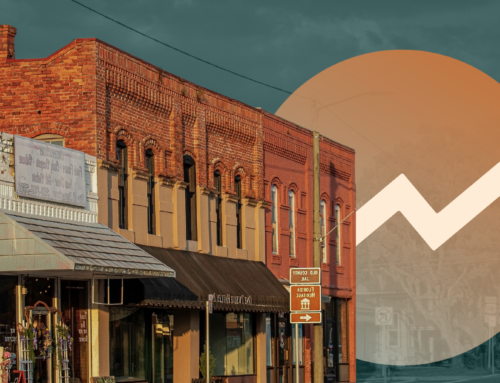Washington, D.C. – Today, the Economic Innovation Group (EIG) released a policy proposal to offer emergency lending to small businesses affected by the economic crisis caused by the COVID-19 outbreak. The proposal, authored by EIG’s President and CEO John Lettieri and Upwork Chief Economist and EIG Economic Advisory Board member Adam Ozimek, would address the liquidity and solvency problems small businesses will encounter as the fallout from the public health crisis continues in the months ahead.
The COVID-19 pandemic is already having a devastating toll on the American economy. As drastic measures are taken to prevent the further spread of the virus, small businesses — which employ nearly half of the American workforce — are suffering dramatic effects. “Without swift and decisive action, a tidal wave of closures will hit the small business community and unleash far-reaching consequences throughout the economy that may be difficult to undo,” write Ozimek and Lettieri.
Full recommendations include:
- Commercial Banks: These loans should be underwritten and held by all commercial banks, so that small businesses can utilize their existing banking relationships or establish new ones. Working with existing lenders will simplify and lower costs for businesses who will refinance existing loans. Banks will be paid by the Federal Government for underwriting, and the government will pay 25 basis points (or whichever rate Congress deems necessary) for the banks to hold the debt on their balance sheets.
- Long-term: Amortization schedules of up to 20 years will allow businesses to spread business cost over a longer period of time.
- Zero Rates: The federal government and banks can currently borrow money at zero or close to zero rates. By insuring these loans under the full faith of the U.S. government, we can pass this low lending rate on to small businesses.
- Uncollateralized: Loans should only be secured by the personal guarantees of the business owners. Businesses in need of emergency lending may lack the collateral necessary for a commercial loan, and assessing collateral quality would waste valuable time.
- Three Months No Payment: Small business commercial loans often include interest only periods, which in the case of 0% interest will mean no payment. This should start with a three month period, which the government can increase if the length of the crisis is longer than anticipated.
- Qualifying Businesses: Providing timely relief to affected businesses will require simple eligibility criteria and a straightforward process for accessing the loans. Lending should be limited to privately-held businesses across all sectors with under 500 full time employees who can demonstrate lost monthly revenue of 25% or more. (Congress may instead choose to focus this program only on sectors likely to experience the most severe effects of the crisis.) To expedite underwriting, no proof of lost revenue will be required up front. However, documentation of temporary significant loss of business revenue must be provided to the IRS as part of the 2021 tax season. Those unable to document this loss will have their loan increased to prime lending rates.
- Broad Usage: Allowed usage of the debt should include maintaining payrolls, refinancing existing loans, purchasing equipment, inventory, furniture and fixtures, funding tenant improvements, and paying for occupied real estate.
- Loan Limits: Loan size should be limited to the lesser of $5 million or 200% of 2019 annual expenses. For the sake of speedy approvals, only the $5 million limit will be imposed up-front and the 200% of annual expenditures will be verified later as part of the business’s annual tax returns. Loans above the 200% of expenditure limit will have the interest rate increased to prime lending rates.
- Bank Liability: For loans amounts above $250,000, if the ex post tax filing fails to substantiate that the recipient business experienced significant revenue loss or finds that it borrowed above the lending limit, banks would see their federal government insurance coverage fall to 90%. This provides skin in the game for banks to provide some due diligence on larger loans, without risking the feasibility of smaller loans. Importantly, both tests are done later so that this does not increase the underwriting burden.
About the Economic Innovation Group (EIG)
The Economic Innovation Group (EIG) is an ideas laboratory and advocacy organization whose mission is to advance solutions that empower entrepreneurs and investors to forge a more dynamic American economy. Headquartered in Washington, D.C. and led by an experienced, bipartisan team, EIG convenes leading experts from the public and private sectors, develops original policy research, and works to advance creative legislative proposals that will bring new jobs, investment, and economic growth to communities across the nation. For more information, visit eig.org.
###






